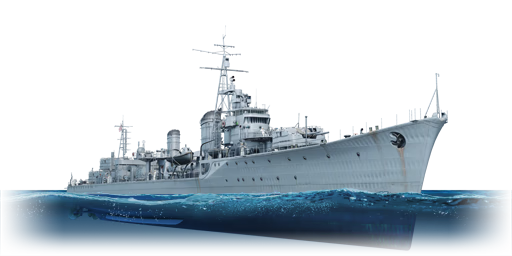The IJN Shimakaze (島風, namesake: Island Wind) is a heavy-duty destroyer focused on torpedoes. She was the fastest ship in the Japanese Navy at 40.9 knots and the only one of her class. Commissioned in 1939 to lead a class of 16 ships and with future plans extending to 32 ships, her kind was cancelled with the Pacific war and funds relocated. She's essentially an elongated Yūgumo-class destroyer allowing her to fit 3 quintuple torpedo launchers and keeping the same main and anti-air armament as shorter ships. Seeing little combat action, Shimakaze primarily took part in Operation Sword and afterwards escorted other ships.
She was introduced in War Thunder during Update "Raining Fire" and excels at her primary function of torpedo-centric gameplay, with 15 tubes loaded with the deadly Type 93 oxygen torpedoes, she can send a full wall of torpedoes in a single salvo. This gameplay is dampened in realistic battles where she can only launch a single salvo, so it's better to conserve torpedoes for certain hits. In arcade battles it's best to launch all torpedoes at targets when possible, having as many fish in the water as possible while reloading the tubes in the meantime. At the battle rating Shimakaze sits, her primary cannons will be outgunned by other destroyers and cruisers, keep distance and use her speed to evade shells at long range.














